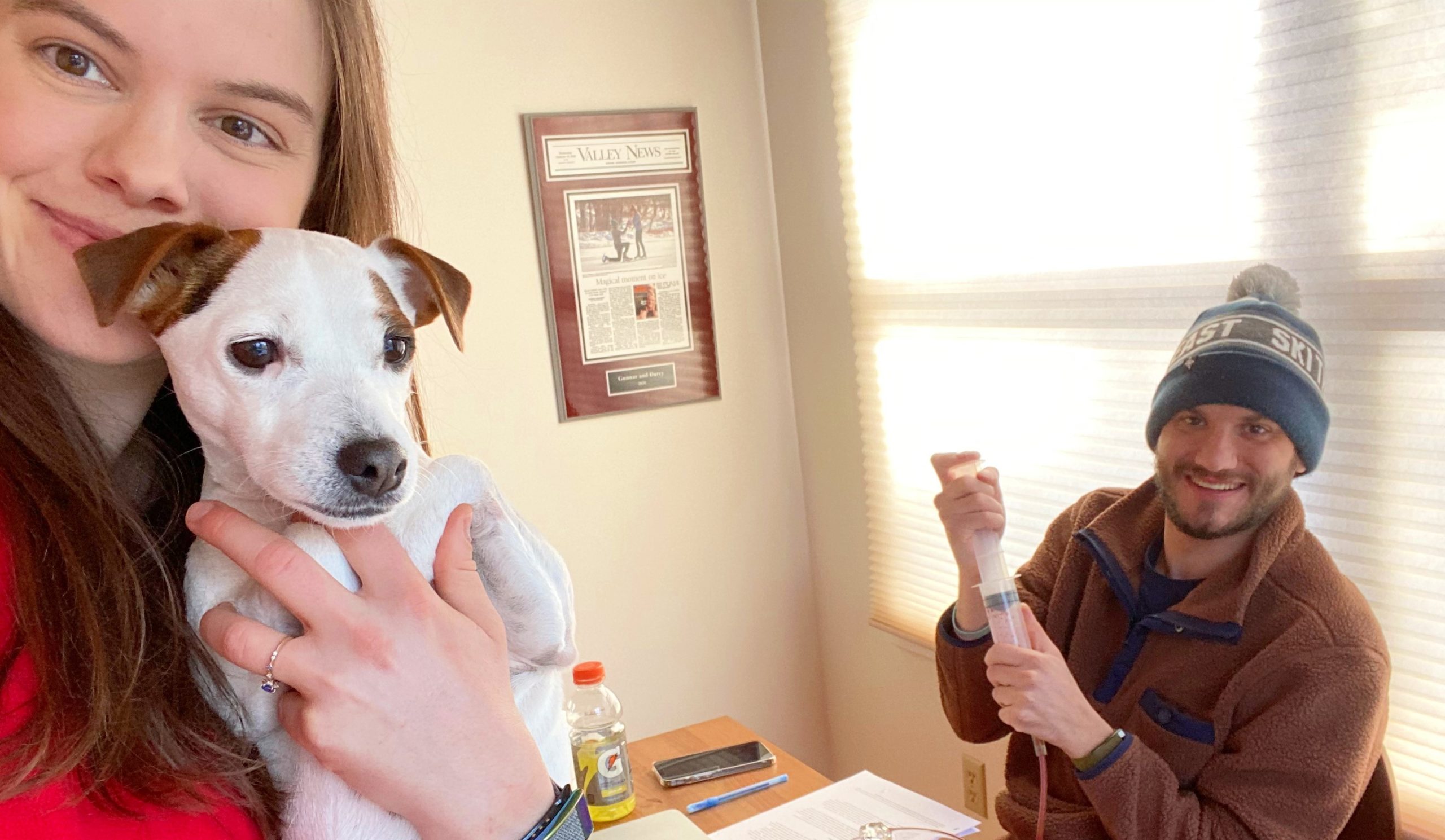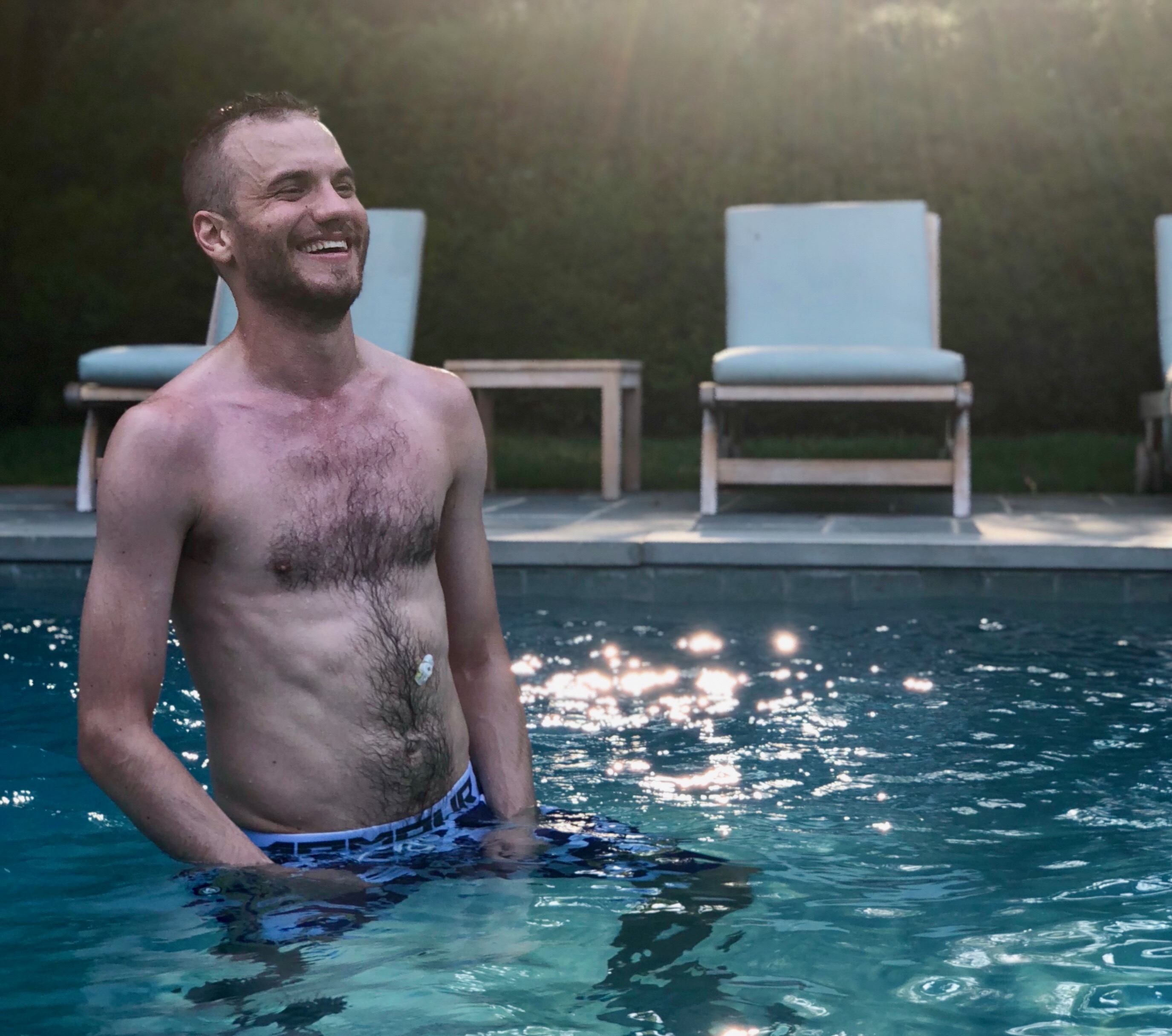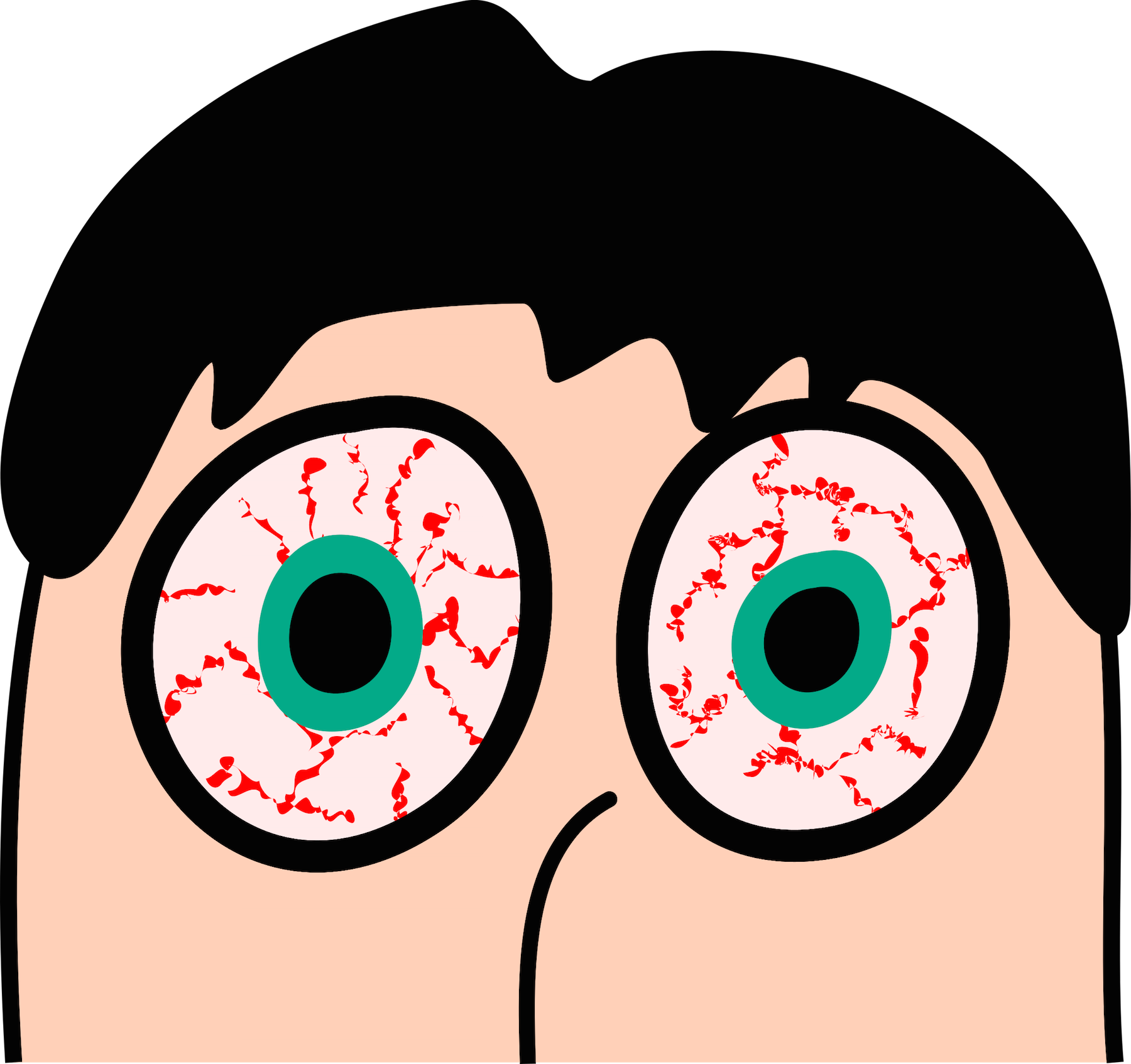This June marks a full decade with my feeding tube – or I guess feeding tubes since I am ~supposed~ to switch it out every 6-8 months. For those of you keeping score at home, that reality is more like a feeding tube swap every 12-16 months.
I am shocked when I look back on my life to think that I’ve had the tube with me for a full 1/3 of the time I have been on this planet.
The last time I offered a reflection like this was when I hit my 5-year anniversary with the g-tube.
I long resented getting a feeding tube placed. As a child, I hated the idea of needing one despite truly being tall and very, very lean. A lot of meals were a lot like mini battles between me and my parents. “One more bite, Gunnar” was often the refrain at the dinner table.
My parents pursued the classic CF strategy of the early 90s: any calorie is a good calorie.
As a result, my breakfasts were usually a combination of milk, cookies, ice cream or some Drake’s Cakes snack like Yodels or Devil Dogs.
Lunches were almost always the same thing: a ham and cheese sandwich (plain) with a bag of chips.
Dinners were more adventurous: meat, potatoes, pasta, pizza, mac & cheese, or hot dogs.
The goal was simple: eat something, anything.
Rarely did I branch out, and when I did it was not exactly too far from the status quo.
My diet was hardly sustainable, but at least I was getting something. When I got sick, though, what little I ate dropped off a cliff.
One of my earliest “sick cues” is still a completely diminished appetite and the nausea that usually comes on with my increasing cough and mucus production, not to mention the horrible tasting infected mucus.
I think I first realized my weight was truly a problem was when I got to high school. My friends and football teammates were getting bigger with each month and after practice work out. I stayed the same. I was always lean, wearing baggy clothes that hardly looked like they fit my 6 foot 2 inch frame.
It wasn’t like my parents weren’t trying to put pounds on me. We tried everything.
First it was thick Carvel milkshakes after school. Then it was mac and cheese after practice. Then it was mass gainer shakes that almost always took me close to 90 minutes to finish. Then it was peanut butter on everything. Then I convinced myself that chocolate milk would be my path to weight gain. Nothing ever worked. If, on the off chance, something did develop into a new routine, it disrupted my normal eating habits.
When that happened, the cycle, of course, repeated. “One more bite, Gunnar” or “You don’t want a feeding tube. You HAVE to finish your plate.”
The straw that finally broke the camel’s back was when I developed pancreatitis in the Fall of my sophomore year of college. I was home at the time finishing up the first week of a two week course of IV antibiotics.
When I was in college and needed IV’s, I returned home to New York to start the course and then finished them at school under supervision from Boston College’s infirmary (a tip I had learned from a woman with CF who was a few years ahead of me at BC). In a way, it was how I transitioned to learn how to do IV’s myself. By the time I was a junior, if I needed IV’s, I just did them myself in Boston after getting a line placed.
Back to the pancreatitis. We never really figured out how or why it happened, but our best guess is that it was medication induced. I was on IV’s and nearing the health bump that usually comes after the first week. I was feeling great, eating well and looking forward to getting back to school, then suddenly the worst pain I had ever felt set in.
It was worse than the typical nausea or aches that come with IV’s. It was just a brutal sensation that took over my entire abdomen and felt like it was grabbing hold of my spine. Worse, the pain would come and go in 5–10-minute intervals. With each moment of relief came the knowledge that the crippling pain would quickly return, and it did for about 18 hours before I decided I needed help. Once inpatient at Columbia University Medical Center, I held without food or liquid (and painkillers, by the way) until enough diagnostic tests were run to determine the problem.
A real kick in the face was when, after almost 2 days without food or water, the attending on the floor decided I needed a CT scan with contrast. The moment the contrast dye touched my lips, I was so nauseated by the liquid I threw up what little bile I had left in my stomach. From there, the threats of force feeding the constant began. As you can imagine, it was a magical couple of hours until my CF doctor put a stop to the power struggle unfolding in my hospital room between me and the attending physician and nursing staff.
Finally, pancreatitis was deemed the culprit, and once the pain subsided enough, I was sent home with prescription strength painkillers (in case the pain came back, and boy did it!) and orders not to eat any fat containing food for two weeks before slowly reintroducing it.
By the end of it all, I weighed less than 130 pounds.
My path towards a feeding tube was no longer uncertain. Surgery was scheduled for June 2011, right after the school year ended.
I was not nervous for the surgery until the homecare company dropped of the supplies the night before. The device representative came into the house and gave me a quick 15-minute demo on the pump, the process for filling the hanging bags, and a quick overview on how to use my feeding tube, which up until that point I thought constituted just one piece – a feeding tube. I learned quickly that there would eventually be two parts – the port in my stomach and the detachable tube – after the surgical incision healed. For the first 6 weeks I would have an 8–12-inch tube sticking out of my stomach.
I had clearly never talked with anyone who had ever been the proud owner of a g-tube.
…of course if you give a g-tube to a college student, nothing good can come of it.
The way I used the g-tube evolved over time. Initially, I was on Nutren 2.0 – one of the classic weight gain formulas prescribed to patients who need calories. It worked. In a matter of months, my weight was comfortably over 155 pounds, and the threat of extreme malnourishment quickly went away. With the new weight gain strategy, I found that it was easier to kick colds, put on a little muscle and recover from CF pulmonary exacerbations. The gains, however, came and went. Nutren was such a dense formula that we realized I was eating less and less food orally and became more and more reliant on the feeding tube to feed myself.
Therein, we tried a change. My fiancée, Darcy, found a formula online that was presented as a “cleaner” option called Liquid Hope. We discovered the oncology department at Columbia had started using it with cancer patients after I asked my doctor to switch my Rx. The switch came, and initially it was a welcome relief. Although less calorically dense, the formula had far less sugar in it. It was also less bloating, which meant that I was more comfortable when I woke up in the morning (at the time, the bulk of my g-tube feeds were done overnight).
Although my weight stayed the same, there wasn’t much of a bump with the new formula, I felt better in more qualitative ways – I was sleeping better, I was eating more, and I did feel like I had a sugar crash when I woke up in the morning. Don’t get me wrong, the Nutren played a valuable role in getting my weight to a place where the Liquid Hope could stabilize it.
Eventually, and I won’t go into much detail here because Darcy has blogged about it over and over, I started to dive into more of a “blenderized” tube feeding world. Darcy takes great pride in making calorically and nutritionally dense shakes (I call them smoothies, but for which I am scolded for doing so). He most recent post describes the shakes in detail.
Like most people on effective CFTR Modulators, I noticed it was easier to keep weight on, so this past year, Darcy came up with the idea of ditching overnight tube feeds for more targeted and consistent daily feeding tube shakes. I felt that because my health was in a place where I could stomach (pun intended) the change with Trikafta to lean on, I was up for something new – after all what else were we going to do in the winter while Covid cases surged all around us?
The effect came on very quickly. My weight, which had gotten a small boost from initially starting Trikafta (I was comfortably at 160-165ish), started to creep towards my longtime goal over 170 pounds. Within several weeks after starting the daily shake diet, we surpassed 170 and eliminated the overnight feeds entirely. I have not done an overnight feed since January. I guess we can count that as another withdrawn prescription since starting Trikafta.
Looking back on the last 10 years, it’s hard to conclude the feeding tube hasn’t played a pivotal role in my care – it certainly has. Initially it brought me from the brink of serious weight loss to something to fall back on when I was sick, and finally ending up with a way to push my weight as far as it will go.
There is no denying, however, that when I was little I saw the feeding tube as the path to something other than being “normal.” I was scared to have a medical device implanted in my body, and I was scared to “look different” than everybody else when I took my shirt off. I was terrified to tell myself that I was getting sicker and sicker until I actually became as sick as I did with pancreatitis.
My feeding tube now takes on a smaller role than it did a decade ago, but I have no shame in saying that I love it, and likely owe what success I did have in my twenties to the small little device implanted in my stomach. Like everything else with CF care, it bridged the gap until something new was required, and it did the job as well as I could have hoped.




